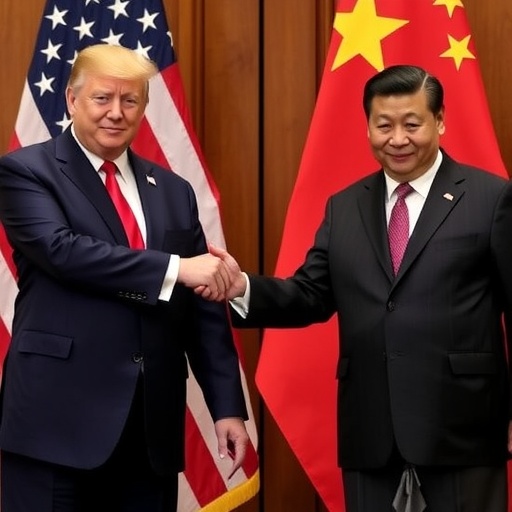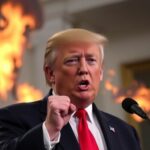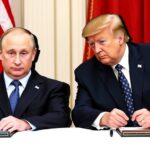US-China trade Deal Nears Completion: Trump and Xi Set for Pivotal Negotiations Amid Global Economic Shifts
In a dramatic turn for international relations, the United States and China have inched closer to a landmark US-China trade agreement, with President Donald Trump and President Xi Jinping gearing up for high-stakes negotiations that could reshape the global economy. Sources close to the talks reveal that both sides have agreed on core principles of a trade deal, including tariff reductions and intellectual property safeguards, potentially averting further escalation in the ongoing trade tensions that have rattled markets worldwide since 2018.
The breakthrough comes after months of secretive backchannel discussions, with officials from both nations confirming that a framework document has been drafted. This development signals a possible thaw in the frosty US-China trade relations that have defined much of Trump’s presidency. As the leaders prepare for what could be their most crucial summit yet, investors and policymakers are watching intently, hoping for stability in an era of uncertainty.
The trade deal outline addresses long-standing grievances, such as China’s alleged unfair trade practices and the U.S.’s demands for market access. Early indications suggest concessions on both sides, with China committing to purchase an additional $200 billion in American agricultural and energy products over the next two years. In return, the U.S. has signaled willingness to ease restrictions on technology exports, a move that could benefit companies like Boeing and Apple.
Core Elements of the Drafted Trade Framework
At the heart of the emerging trade deal lies a series of targeted measures designed to balance bilateral economic interests. According to a leaked summary obtained by Reuters, the agreement includes a phased reduction of tariffs imposed during the trade war. Specifically, the U.S. plans to lower its 25% tariffs on $250 billion worth of Chinese goods to 10% within six months of signing, while China would reciprocate by cutting duties on U.S. automobiles and soybeans by up to 15%.
Intellectual property rights form another pillar, with China pledging enforceable reforms to curb forced technology transfers and counterfeit goods. “This is a win for American innovation,” stated U.S. Trade Representative Robert Lighthizer in a recent briefing. “We’ve secured commitments that go beyond rhetoric, with verifiable mechanisms to protect our creators and businesses.” Statistics from the U.S. Patent and Trademark Office highlight the stakes: American firms lost an estimated $50 billion annually to IP theft linked to China prior to the trade disputes.
Additionally, the deal incorporates agricultural safeguards, addressing farmer distress in the American heartland. China has agreed to lift non-tariff barriers on U.S. pork and poultry, potentially injecting $15 billion into rural economies. Energy provisions are equally significant, with Beijing committing to import more liquefied natural gas (LNG) from the U.S., boosting exports that reached 1.6 million tons in 2019 alone.
Financial Services Liberalization
A lesser-discussed but critical aspect involves opening China’s financial sector. The trade deal would allow U.S. banks and insurers greater access to the world’s second-largest economy, capping foreign ownership limits at 100% for certain institutions. This could see firms like JPMorgan Chase expand operations, fostering deeper economic ties. Experts estimate this liberalization could add $1 trillion to global trade flows over the decade.
Diplomatic Maneuvers Leading to the Breakthrough
The path to this US-China trade accord has been fraught with tension, marked by a series of clandestine meetings and public posturing. It all traces back to the G20 summit in Buenos Aires in late 2018, where Trump and Xi first agreed to a 90-day truce. Since then, 13 rounds of negotiations have unfolded, often in Beijing and Washington, with virtual sessions accelerating amid the COVID-19 pandemic.
Key diplomats have played pivotal roles. On the U.S. side, Lighthizer and Treasury Secretary Steven Mnuchin have led the charge, shuttling between capitals. Mnuchin recently told CNBC, “We’ve built trust through tough conversations—President Trump has been directly involved, pushing for a deal that puts America first.” Chinese Vice Premier Liu He, Xi’s trusted envoy, has mirrored these efforts, emphasizing mutual respect in state media interviews.
Behind closed doors, concessions were hard-won. Reports indicate that in a marathon session last month, U.S. negotiators dropped demands for structural reforms in state-owned enterprises, focusing instead on enforceable purchase commitments. China, in turn, relented on currency manipulation clauses, agreeing to transparency measures under IMF oversight. This pragmatic shift reflects the economic pressures both nations face: U.S. GDP growth slowed to 2.3% in Q2 2020 partly due to trade frictions, while China’s exports to the U.S. dipped 12% year-over-year.
- Timeline of Key Talks: December 2018: Initial truce; April 2019: Breakdown and tariff hikes; October 2019: Phase One outline; June 2020: Virtual round amid pandemic.
- Major Hurdles Overcome: IP enforcement, agricultural access, and digital trade rules.
Global Market Ripples from the Potential Agreement
The prospect of a finalized trade deal has already sent shockwaves through financial markets. The Dow Jones Industrial Average surged 300 points on news of the framework, while Shanghai’s Composite Index climbed 2.5%. Analysts attribute this optimism to reduced uncertainty, with JPMorgan forecasting a 1.5% boost to global GDP if the deal holds.
For the U.S., the US-China trade thaw could lower consumer prices by 0.4%, according to the Peterson Institute for International Economics, as cheaper imports flood back in. Manufacturers stand to gain too: tariffs on steel and aluminum, which added $900 million in costs for U.S. builders last year, would be rolled back. However, not all sectors cheer—some domestic producers fear renewed Chinese competition.
In China, the agreement bolsters Xi Jinping’s economic agenda. With domestic consumption lagging at 38% of GDP (compared to 68% in the U.S.), increased U.S. imports could stimulate growth, targeting 6% for 2021. Yet, Beijing’s state media cautions against over-reliance on exports, highlighting diversification efforts into ASEAN markets, where trade volume hit $600 billion in 2019.
- U.S. Benefits: $100 billion in annual export gains, job preservation in key industries.
- China’s Gains: Stabilized supply chains, tech access for ‘Made in China 2025’ initiative.
- Risks: Enforcement challenges, potential for future disputes.
Broader implications extend to allies. The European Union, which exported €200 billion to China in 2019, may seek similar concessions, while Japan and South Korea monitor for spillover effects in semiconductors and autos.
Voices from the Frontlines: Reactions to the Trade Progress
Stakeholders across the spectrum have weighed in on the advancing negotiations. Business leaders, long battered by the trade war, express cautious enthusiasm. Tim Cook, CEO of Apple, whose supply chain relies heavily on China, noted in a Bloomberg interview, “A stable US-China trade environment is crucial for innovation and growth—we applaud the progress.” The U.S. Chamber of Commerce echoed this, estimating that unresolved tensions cost 245,000 American jobs.
Farmers, hit hardest by retaliatory tariffs, see hope on the horizon. In Iowa, soybean producer Mark Smith told AP, “We’ve lost markets, but this trade deal could bring buyers back—Trump promised us this, and now it’s materializing.” Data from the USDA shows U.S. farm exports to China plummeted from $24 billion in 2017 to $9.1 billion in 2019, underscoring the urgency.
Critics, however, remain skeptical. Senator Chuck Schumer (D-NY) warned, “This can’t be a superficial fix—China must truly reform, or we’ll be back here in five years.” Environmental groups like the Sierra Club highlight potential downsides, arguing that increased fossil fuel exports could undermine Paris Agreement goals, with U.S. LNG shipments to China rising 50% last year.
Internationally, Australian Prime Minister Scott Morrison praised the move, stating it could ease pressure on commodity prices. Meanwhile, WTO Director-General Ngozi Okonjo-Iweala called for multilateral input, saying, “Bilateral deals are steps forward, but global rules need strengthening.”
Spotlight on the Trump-Xi Summit: What Lies Ahead
As Trump and Xi Jinping prepare for their anticipated face-to-face negotiations, all eyes turn to the venue—rumored to be a neutral site like Singapore or virtually via secure video. Scheduled for late summer, the summit will aim to ink the trade deal, with both leaders seeking a legacy-defining win. Trump, campaigning for re-election, touts it as “the greatest deal ever,” while Xi positions it as evidence of China’s responsible global role.
Potential sticking points include enforcement mechanisms and dispute resolution. The U.S. insists on a bilateral panel, bypassing the WTO, which China views warily. If successful, the agreement could pave the way for Phase Two talks on subsidies and labor standards.
Looking forward, this US-China trade pact might herald a new era of cooperation, mitigating risks of decoupling. Economists predict stabilized supply chains could add 0.8% to U.S. growth by 2022, while fostering innovation in green tech and AI. Yet, geopolitical tensions—over Hong Kong, Taiwan, and the South China Sea—loom, reminding us that economics and politics remain intertwined.
For businesses, the message is clear: prepare for opportunity. Supply chain managers are already rerouting logistics, anticipating tariff relief. Consumers may soon see relief at the pump and grocery store, with lower import costs trickling down. As the world holds its breath, the Trump-Xi dialogue could not only resolve a trade rift but also set precedents for future international pacts, influencing everything from climate accords to digital governance.
In the end, this trade deal represents more than economics—it’s a test of diplomacy in a multipolar world, with implications rippling far beyond Washington and Beijing.








